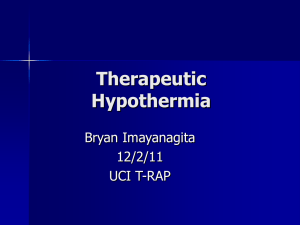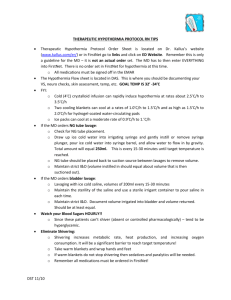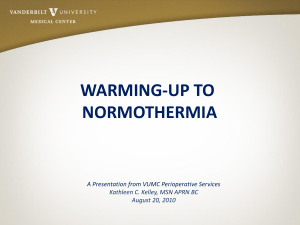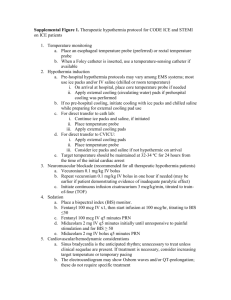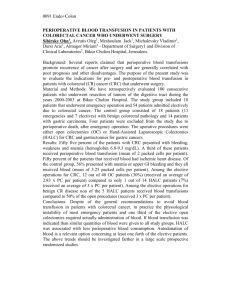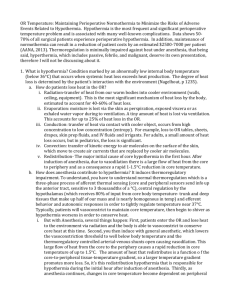Companion 11 PBM Guidelines
advertisement
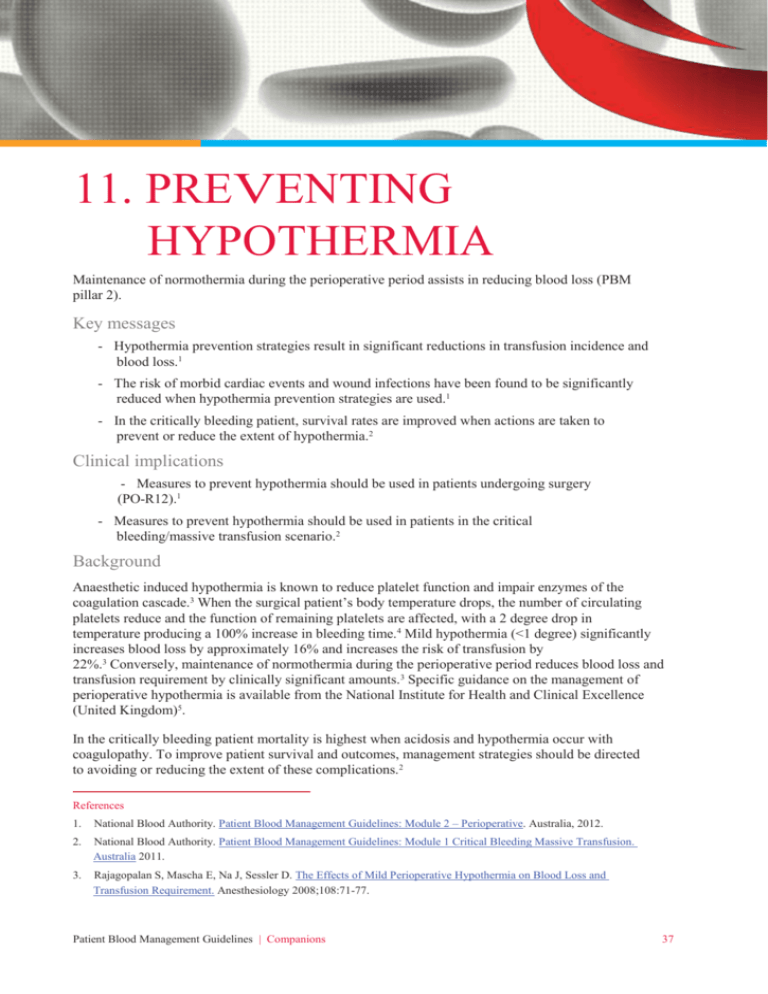
11. PREVENTING HYPOTHERMIA Maintenance of normothermia during the perioperative period assists in reducing blood loss (PBM pillar 2). Key messages - Hypothermia prevention strategies result in significant reductions in transfusion incidence and blood loss.1 - The risk of morbid cardiac events and wound infections have been found to be significantly reduced when hypothermia prevention strategies are used.1 - In the critically bleeding patient, survival rates are improved when actions are taken to prevent or reduce the extent of hypothermia.2 Clinical implications - Measures to prevent hypothermia should be used in patients undergoing surgery (PO-R12).1 - Measures to prevent hypothermia should be used in patients in the critical bleeding/massive transfusion scenario.2 Background Anaesthetic induced hypothermia is known to reduce platelet function and impair enzymes of the coagulation cascade.3 When the surgical patient’s body temperature drops, the number of circulating platelets reduce and the function of remaining platelets are affected, with a 2 degree drop in temperature producing a 100% increase in bleeding time.4 Mild hypothermia (<1 degree) significantly increases blood loss by approximately 16% and increases the risk of transfusion by 22%.3 Conversely, maintenance of normothermia during the perioperative period reduces blood loss and transfusion requirement by clinically significant amounts.3 Specific guidance on the management of perioperative hypothermia is available from the National Institute for Health and Clinical Excellence (United Kingdom)5. In the critically bleeding patient mortality is highest when acidosis and hypothermia occur with coagulopathy. To improve patient survival and outcomes, management strategies should be directed to avoiding or reducing the extent of these complications.2 References 1. National Blood Authority. Patient Blood Management Guidelines: Module 2 – Perioperative. Australia, 2012. 2. National Blood Authority. Patient Blood Management Guidelines: Module 1 Critical Bleeding Massive Transfusion. Australia 2011. 3. Rajagopalan S, Mascha E, Na J, Sessler D. The Effects of Mild Perioperative Hypothermia on Blood Loss and Transfusion Requirement. Anesthesiology 2008;108:71-77. Patient Blood Management Guidelines | Companions 37 4. Mahoney, CB, Odom J. Maintaining intraoperative normothermia: A meta-analysis of outcomes with costs. AANA Journal 1999:67;155-164. 5. National Institute for Health and Clinical Excellence. CG65 Perioperative hypothermia (inadvertent): NICE guideline. UK. 2008. 38 Patient Blood Management Guidelines | Companions
